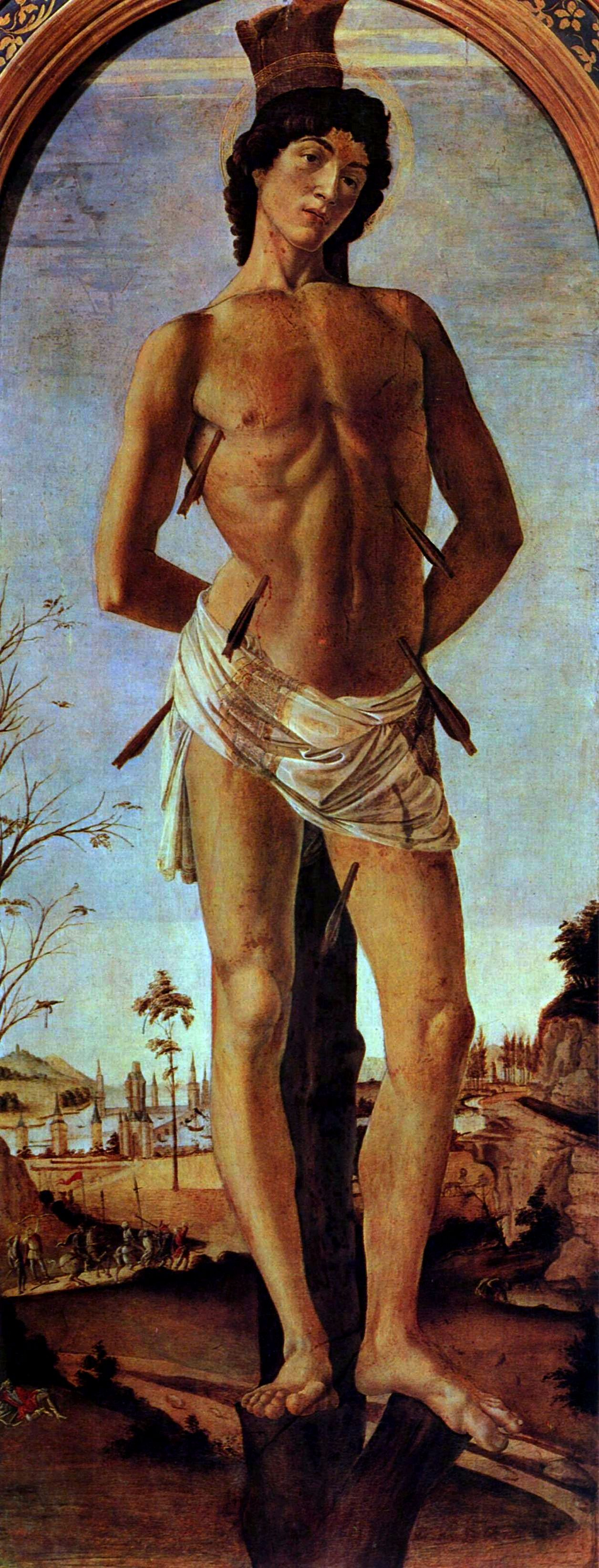Sandro Botticelli, Sebastian
Table of Contents:

Sandro Botticelli
Sebastian (1470-72)
Botticelli painted this image around 1470-72 for a pier in the church of Santa Maria Maggiore, hence its vertical and narrow format. Botticelli does not paint St. Sebastian as a Roman Imperial Guard, but instead he places the figure in front of a sunny harbor.
In his first representation of an idealized male nude, Botticelli emphasized the saint’s bone and muscle structure to demonstrate his understanding of human anatomy. St. Sebastian stands in “contrapposto” with the right leg accepting the weight from the body. The hips shift in response to this weight distribution, further enhancing the gracefulness of the figure.
St. Sebastian was believed to have regained his health after being pierced by arrows; therefore, he appears indifferent to the harm being inflicted upon him. The muted colors of the landscape correspond to the common understanding that Sebastian was martyred in the month of January.
Bibliography
Legouix, Susan. Botticelli. London: Chaucer Press, 2004. Pg. 36.
Lightbown, Ronald. Sandro Botticelli: Life and Work (vol. 1). Berkeley: University of California Press, 1978. Pg. 36-37.